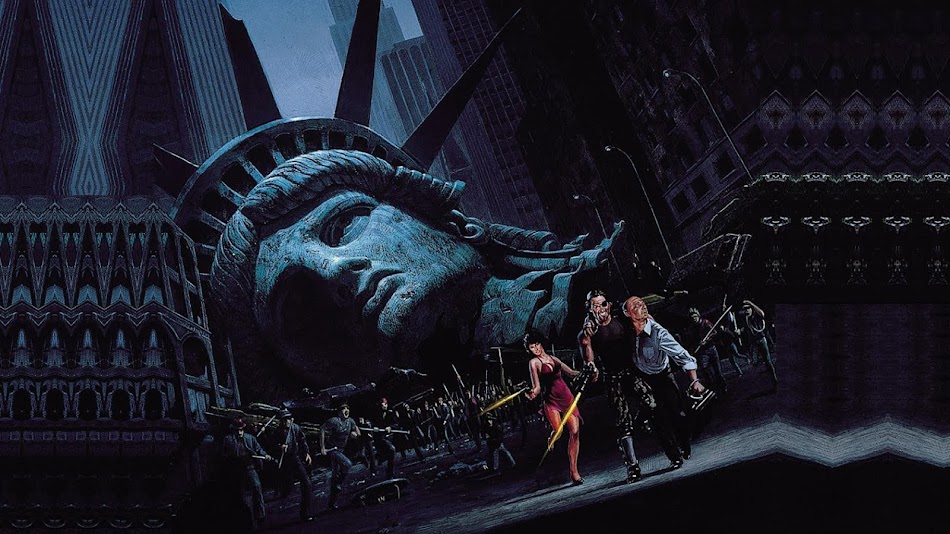A QUIET PLACE IN THE COUNTRY
(Italy/France - 1968; US release 1970)
A QUIET PLACE IN THE COUNTRY is a strange and impenetrable supernatural art/horror hybrid from Italian filmmaker Elio Petri that came between his pop Eurocult masterpiece THE 10TH VICTIM (1965) and the Oscar-winning INVESTIGATION OF A CITIZEN ABOVE SUSPICION (1970). Petri and THE GOOD, THE BAD AND THE UGLY co-writer Luciano Vincenzoni are credited with the screenplay, which also had some input from frequent Michelangelo Antonioni collaborator Tonino Guerra, and the end result definitely has an Antonioni-gone-horror feel to it, along with some distinctly Mario Bava-esque set pieces and story tropes (cursed houses, buried secrets, etc) that also prefigure the coming rise of the giallo, particularly the more paranormally-charged ones like Dario Argento's DEEP RED (1975). The film was also a likely influence on Pupi Avati's THE HOUSE WITH LAUGHING WINDOWS (1976), especially with its immersion in the art world. Unable to focus on his work in Milan, creatively-blocked artist Leonardo Ferri (Franco Nero) decides to get away to the titular location, a villa in a remote rural community that was found by his married lover and primary backer Flavia (Vanessa Redgrave). Already suffering from strange nightmares--the film opens with a psychosexual, S&M fever dream sequence where Flavia is teasing and taunting a restrained Leonardo, who's wearing nothing but a diaper--Leonardo finds the isolation of the villa does little to improve his mental state. He's losing his grip on reality and starts seeing the ghostly apparition of Wanda (Gabriella Grimaldi), a promiscuous 18-year-old local girl who died on the property under mysterious circumstances in 1944. The townspeople obviously know something they aren't revealing, Leonardo's already bizarre behavior grows more erratic by the minute, and it becomes quite clear that Wanda's spirit doesn't like it when Flavia is around.
That plot synopsis makes A QUIET PLACE IN THE COUNTRY sound a lot more consistently grounded than it is. Torn between his art film aesthetic and the genre gutter, Petri too often errs on the side of the pretentious cineaste. He seems particularly indebted to Antonioni and 1966's BLOW-UP, from the trippy psychedelia and the obsession of its lead character to the script input of Guerra and the presence of Redgrave who, despite her top billing, really has a supporting role (she and Nero met on the set of 1967's CAMELOT and were a couple at the time, and would eventually marry decades later in 2006). The film takes forever to get going and the tedious first hour is a real slog, but once Petri decides to focus on the horror elements, things improve significantly. The villa--a Cinecitta set seen in many Italian films--is incredibly atmospheric and filled with corners and hidden spaces that have you on edge (there's some terrific cinematography by Luigi Kuveiller and wonderfully fluid camera work by Ubaldo Terzano, Bava's favorite camera operator), and the film features a score by Ennio Morricone that finds the legendary composer in one of his free-jazz freakout moods, occasionally incongruously comedic-sounding, with moans, dissonant percussion, and randomly blaring trumpets. Until a surprisingly grisly finale, Petri keeps things pretty low-key though he does stage one of the more chillingly effective seances you'll ever see in this type of movie. There's a lot to appreciate about A QUIET PLACE IN THE COUNTRY, a rather obscure Eurocult curiosity that didn't turn up in US theaters until August 1970, just a couple of months before Petri's INVESTIGATION OF A CITIZEN ABOVE SUSPICION opened. It infrequently appears on Turner Classic Movies in the vicinity of 3:30 am (with its gore and nudity, this is pretty strong stuff by TCM standards) and was given an manufactured-on-demand DVD release by MGM a few years ago, but it remains a little-remembered relic from its day. Its biggest problem is that Petri non-committally hovers around the line separating "important" and commercial cinema and throughout, he fights the obvious desire to slum it in genre fare. He handled that fusion a bit better with THE 10TH VICTIM, but ultimately, A QUIET PLACE IN THE COUNTRY is an intriguing, uneven mess that works best after snapping out of its Antonioni worship and begrudgingly admitting that it's a horror movie. (R, 106 mins)



No comments:
Post a Comment